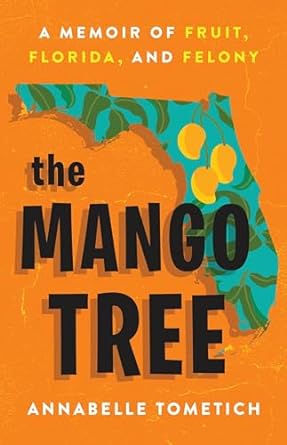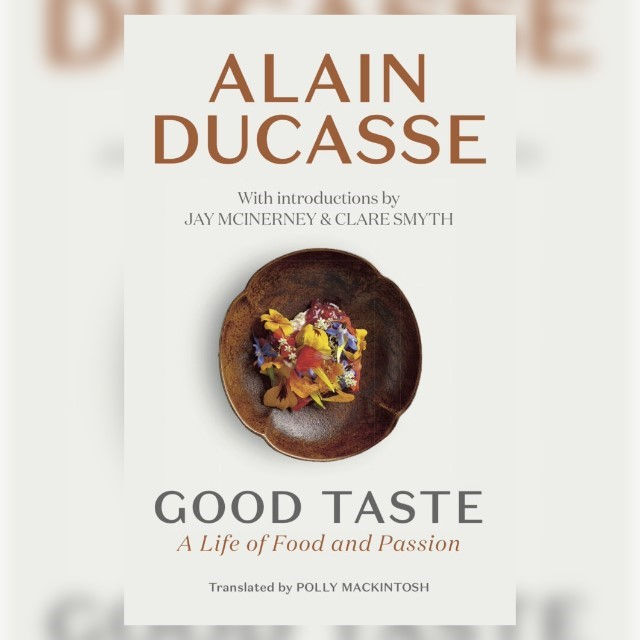The Mango Tree
- cathiebp24

- Apr 4, 2024
- 5 min read
Updated: May 10, 2024

When journalist Annabelle Tometich picks up the phone one June morning, she isn’t expecting a collect call from an inmate at the Lee County Jail. And when she accepts, she certainly isn’t prepared to hear her mother’s voice on the other end of the line. However, explaining the situation to her younger siblings afterwards was easy; all she had to say was, “Mom shot at some guy. He was messing with her mangoes.” They immediately understood. Answering the questions of the breaking-news reporter—at the same newspaper where Annabelle worked as a restaurant critic––proved more difficult. Annabelle decided to go with a variation of the truth: it was complicated.
So begins The Mango Tree, a poignant and deceptively entertaining memoir of growing up as a mixed-race Filipina “nobody” in suburban Florida as Annabelle traces the roots of her upbringing—all the while reckoning with her erratic father’s untimely death in a Fort Myers motel, her fiery mother’s bitter yearning for the country she left behind, and her own journey in the pursuit of belonging.
The author’s story resonates with the majority of first-generation Asian American daughters. It’s complicated.
“There’s nothing normal about being Filipino if you’re living in Fort Myers, Florida USA.”
I lived in Fort Myers for about a year with my Aunt and Uncle with my two cousins. Why they moved from Chicago to Fort Myers, my aunt responded: “to get away from my aunties.” In my short stay in Fort Myers, I am amazed at just how many biases that still exist and that I still hold. In all honesty had I not lived in Fort Myers I probably wouldn’t have been able to relate to her telling. The setting is at its core that makes her story unique to share.
Migrating to another part of the country, let alone having to assimilate into a completely different culture is brave, my friend. Add losing the one who was to always be by your side with three kids in tow to pretty much fend for yourself the only way you know how. I’m not condoning firing at a truck for stealing her mangoes is “the only way you know how” or that’s how it’s done in the Philippines. It’s Fort Myers…Florida. And if the author’s reference to General Lee imparts (Lee County; Lee Memorial Hospital) a glimpse of the mindset, I concur. You get the gist.
“I hated that my mother was so open with everyone, that she couldn’t just keep those skeletons in the closet, safely under wraps.”
Annabelle’s story isn’t as far–fetched as we Asian Americans would like to recognize otherwise. It just so happened her mom got caught thinking she was in her right. Uh, nope. Even if it was a BB gun.
Because this is my food writing blog, I wanted to make it clear that mangoes, while sooooooo delicious, are not free for the taking if grown on someone else’s land, land you don’t own. Now that's a given—Hello!!!!!
All Things Philippines
Both my parents are from one of the Visayan Islands, Bohol. Off the coast of the Pacific Sea, it’s known for its Chocolate Hills and our beloved Tarsiers. The neighboring Panglao Island has become an international mecca hosting Panglao International airport with cozy affluent beach resorts such as Henann & Alona Kew.
For me, I know it’s the place my parent’s grew up, their homeland.
So planning a vacation to the Philippines is a big deal, especially during the Christmas season. It’s time and money: being able to take the time off and pasalubong. Imagine a twenty-five hour trip (and she only has to arrive in Manila, no island hopping) including layovers … with three kids and twelve – wait, twelve?!!?! – balikbayan boxes.
“If it’s not recycling and not garbage, it goes in the balikbayan box. You don’t get to throw away perfectly good toys in the garbage when you have cousins who can’t afford shoes.”
Hmmm. It’s akin to “Eat all your food-there are starving children in China”. Well, perhaps not.
Chapter 20. I still can’t keep shaking my head. It’s a culture shock for sure unless you grew up and are aware of the many customs of which I am accustomed to.
As there are 7,000+ islands that make up our Country, Tagalog is the main dialect. Due to the 100 years of Spanish colonization, there are some Filipino words that stems from Spanish words like punyeta {tagalog} and puñeta {spanish}.
“Mom says the novena isn’t a Baháʼí thing. It’s a Catholic thing and a Filipino Thing.”
When I came across Baháʼí, I assumed that was their religion. While Baháʼí, a form of Islam, practiced mostly in the island of Mindanao, the majority of the Philippines is Catholic. What an influence a hundred years of Spanish colonization will do.
Filipino Cuisine
Lest we forget the cuisine! Breakfast, lunch, dinner—merienda, pulutan. And mangoes. I could eat them every day, all day.
Chapter 21 makes mention of Filipino foods I’m all too familiar with. And it’s made me hungry for kare kare, lechon kawali. That’s only a few of the foods mentioned. Those not mentioned: dinuguan, laing, bistek, pusit.
Back when I lived in Fort Myers, I don’t believe there was an Asian grocery store much less an aisle. It was a challenge to find food staple necessities such as toyò, patis, bagoóng. Fast forward to the present, there are two Asian grocery stores. Yay!
Having access to such staples is crucial in making the dishes that are so Filipino—I can’t imagine not easily being able to grab a 25lb bag of jasmine rice! I take a step back when I enter a Filipino grocery store—it’s not fancy by any means but I am heart-felt grateful I can pick up a bottle of Silver Swan, frozen bangus, specialty stew and soup mixes, and my Kopiko.
The Eldest Mango
Part of why I chose to add this novel to my blog was not because of her Filipino background. It is her 18–year profession as a food writer, editor, and restaurant critic.
It was during her time–off sabbatical when she discovered her passion for food. Her culinary career includes having worked as a prep and line cook, established a full–service catering and café business, being Jean Le Boeuf—to penning in her own name.
"It is a love letter to her fellow Filipino Americans, her lost younger self, and the beloved fruit tree at the heart of her family."
I understand too well the Filipino upbringing and mentality—as a child and as as mother. I understand her fear of becoming her mother. All I can say is keep score of the data points, recognize the path we all have lead. In the end, we are only human and the privileges are our own.
Although I wished she shared her mango salsa recipe.
Raw, gritty—she tells it like it is. Perhaps a bit too much-but it’s her story to tell and I consider myself masuwerte to come across and read her memoir. Pumunta ka girl!
Thank you to the publisher for accepting my request for an ARC. I am looking forward to her follow-up memoir of her years as The News-Press food critic Jean Le Boeuf.
Release Date: April 2, 2024
Publisher: little, brown and company
~ date read april 2, 2024 ~ 5 stars ~
Disclaimer: I received this book in exchange for a fair review. All opinions are my own and I was not compensated for this review.
NOTE: The C-team. chapter ~ My daughters are the A-team. I can’t say for sure if it’s a Filipino thing, but what an influence our life-long Filipino heritage instills, more so subconsciously.




Thanks for your review Cathie! Now I'm curious to learn more about this run-in with the mangoes!
Side note: I loved travelling around Bohol and it's Chocolate Hills and tarsiers. Brought back great memories thinking about those places!
At first glance, I thought this was a blog about cooking/restaurants but I love that it's focused on food-lit books!
I also loved how you included your life experience in the Mango Tree entry. Keep us posted!